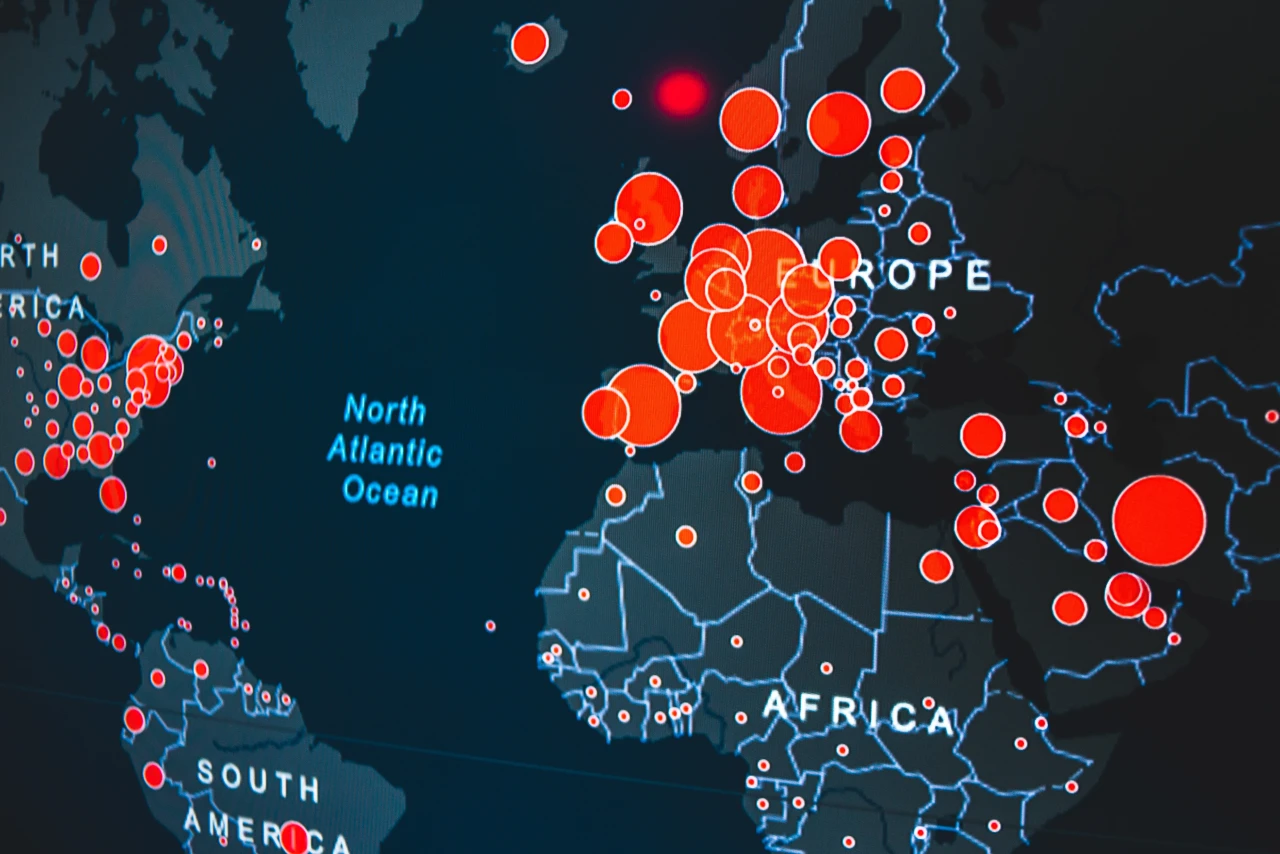The U.S. is seeing a higher rate of deaths from omicron. It's important to know why
It’s been clear for some time that the shape of the omicron wave in the United States has differed significantly from that in other nations. That’s not so much true of the number of cases coming in—omicron has generated a spike in cases almost everywhere—but it is true of the outcomes of those cases.
For most of the world, each successive wave of COVID-19 has seen a decreasing rate of hospitalizations and deaths. That steadily improving outcome was true even during the delta variant, which was widely seen as more virulent than past versions of SARS-CoV-2. However, though the U.S. saw significant improvements as vaccines rolled out, the rate of improvement slowed significantly during delta. Now the U.S. is showing a case fatality rate for omicron that greatly exceeds many nations. Americans are simply dying at a higher rate from COVID-19 than in the vast majority of wealthy nations.
On Wednesday, The New York Times noted this issue. The paper of record did an admirable job of charting America’s ”ballooning death toll” in spite of the still widely held idea that omicron is a “mild” variant of COVID-19. They note, accurately, that deaths are now exceeding the worst levels seen during the delta surge and that they are “more than two-thirds as high as the record tolls of last winter, when vaccines were largely unavailable.”
And that dependent clause is as close as the whole article ever comes to providing a reason.
In the article, the Times quotes an expert from Scotland who notes: “Death rates are so high in the States—eye-wateringly high.” But that quote breaks off without providing any explanation for how things got into this state.
The “5 Ws” make up an idea that goes all the way back to Aristotle, and one that has long been regarded as the goal of good journalism. An article should discuss who is involved in an event, what happened, when it occurred, where it took place, and finally why it happened.
No matter what police shows say on TV, motive matters very little when it comes to the law. People are convicted every day for crimes where the reasoning behind the actions remain murky or is wholly ignored. But an article, especially an explanatory article, owes it to the reader to focus heavily on that last W: Why did this happen? How did the United States end up in a position where it’s seeing a higher cumulative death toll from omicron than comparable nations?
The article does offer a kind of superficial gesture toward a cause:
It also notes that Americans lag in getting a booster shot. And that’s it, for an astounding 23 paragraphs, before finally getting this much:
But … how did that happen? How is it that Americans have plenty of vaccine available, but won’t get vaccinated? How did it happen that Americans have become so distrustful?
Apparently this was a spontaneous phenomenon, perhaps related to … amber waves, or purple mountains. Certainly no one reading the article would get the impression that one political party has conducted a years-long campaign to generate that distrust. The fact that Republican Party officials have opposed vaccine mandates, demanded that businesses and schools remain open no matter how threatening the conditions, and worked to reduce levels of testing doesn’t get mentioned. Neither does the idea that that party—along with an entire television network—has pushed false cures like hydroxychloroquine and ivermectin on their supporters.
The article links to a recent study showing that the level of distrust for health messaging coming from the government corresponds directly to rates of infections and fatalities. But it doesn’t give a clue about the source of that distrust.
And that’s a problem.
It may be possible to arrest a criminal without knowing the motive, but without the “why” behind an article, it’s not possible for the reader to understand what action needs to be taken to address the problem described.
Something like this:
American’s are dying at a higher rate than other wealthy nations because this is, as President Joe Biden said months ago, primarily a “pandemic of the unvaccinated.”
Vaccinations rates are lower in America because the Republican Party and right-wing media have been actively pushing a false narrative that suggests the vaccines are either a “threat” or are “ineffective.”
Republican politicians and right-wing media have also been encouraging the use of “alternative” treatments, including colloidal silver, hydroxychloroquine, zinc, ivermectin, large doses of vitamins, and drinking urine. None of these are effective at improving COVID-19 outcomes.
Republicans and right-wing media have also launched continuous assaults on Dr. Anthony Fauci, the Centers for Disease Control and Prevention, the National Institutes of Health, and state and county health directors. These actions have directly undercut support for figures who, before the pandemic, enjoyed near-universal support.
In multiple states, Republican governors have issued executive orders—or Republican legislatures have passed bills—designed to undercut medical authorities, limit the ability of local governments to promote safe practices, and direct anger over the pandemic toward those who are working hardest to end it.
Without that information, the idea that deaths in the U.S. are higher than they should be is a tragedy. With that information, it’s a crime.

